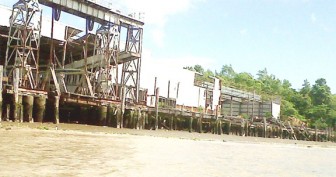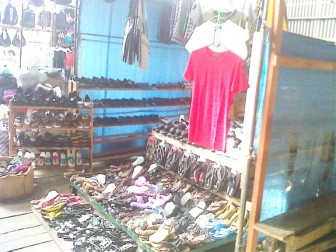Any major rehabilitation of the Georgetown/Vreed-en-Hoop Ferry Stellings will have to await a pre-feasibility study being conducted by the Ministry of Transport with regard to the Demerara River crossing, Minister Robeson Benn says.
“We’re doing a pre-feasibility study with respect to the Demerara River crossing,” Benn said. He added that the first option is a new high level bridge among others but the study would also examine whether the ferry service needs to be upgraded. This pre-feasibility study is expected to be completed within the next two months.
The collapse of a section of the Demerara Harbour Bridge last month, sparking an increase in the number of persons using the speedboat service, highlighted the dire need for the overall rehabilitation of the stellings at both Vreed-en-Hoop and Georgetown and the reintroduction of the ferry service.
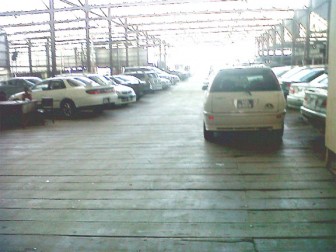
During this period the steps at both stellings were damaged, according to the Transport and Harbours Department (T&HD).
T&HD, last week stated that it has completed rehabilitation works on the northern section of the Stabroek ferry stelling which was damaged “due to constant mooring during the period in which the Demerara Harbour Bridge was non-operational.”
In relation to maintenance works at both ends of the stelling, Minister Benn stated that “minimal work has been done to keep the water taxi (speedboat) service going.” He added that they plan to put in a floating ramp for embarkation and disembarkation.
But large infrastructural work, given the deterioration over the years, has not been done.
Commuters, especially females and the elderly, have complained about the lack of rails alongside the steep steps. In this regard, Minister Benn stated that rails will be put in place at the steps but he noted that they are constantly being struck by the vessels.
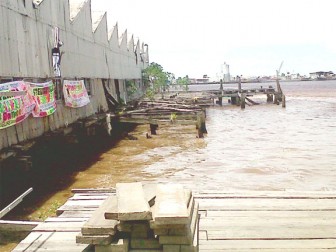
However, he reiterated that a floating ramp would be introduced for the mooring and loading of vessels, adding that “we’re looking at going for a different design.”
Several requests
Meanwhile, Region Three Chairman, Julius Faerber said that they have made several requests to have the stellings rehabilitated since there is a need for the upgrade in view of the huge importance of the crossing to Region Three commuters.
Faerber in an interview with Stabroek News said that in addition to requests made for the overall rehabilitation of the stellings, they have also requested the ministry’s assistance in maintaining the stellings to ensure their day-to-day operation.
He noted that this was necessary in view of the need for an alternative transportation route.
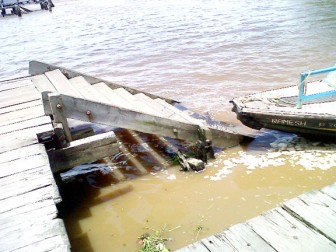
“Sometimes you know the bridge collapses suddenly and we need to have an alternative route so we have asked them to maintain the stelling as that alternative route,” he said.
When asked about maintenance works on both ends of the crossing, the Regional Chairman stated that he is unaware of what work the ministry would do because the Region has no jurisdiction over that.
“We don’t have a say on what they do unless it is fully operationalized, then we can make comments on whatever we see that needs to be done,” he stressed.
“I wouldn’t be able to say what they would do in terms of putting aside funds to have the stelling being maintained and up to this last time the bridge had given us some problems I had personally had a one-to-one discussion with the minister pertaining to the rehabilitation to the stelling,” he recalled.
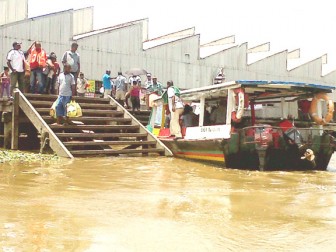
Faerber said he was told by Minister Benn that it would take quite a lot of funding for the stellings to be repaired and so talks on that issue were put on hold.
Stabroek News paid a number of visits to the stellings and got the chance to interact with daily commuters. They stressed the need for the reintroduction of the ferry service and for rails to be installed on the steep stairway.
Hard time
This newspaper caught up with some elderly persons who have been using the stelling for a number of years.
Fifty-six-year-old Margaret Samuels said that she has been using the stelling for over three decades to transact her business on a daily basis in Georgetown. The Pouderoyen, West Bank Demerara, resident said that she plies the river route on a daily basis to sell vegetables at Bourda Market.
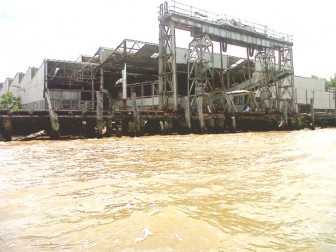
“I does get a hard time to come up and down this step and then me get me lil bag them I does find it hard,” she said.
“A time when water was low I slip, because the step them been wet, and fracture me hip…me been can’t wuk fuh couple months well and had to tek bed rest,” she recounted.
The woman said that she cannot use minibus transportation since in the mornings most of the buses leave her at the side of the road because of her bulky bags.
“Them minibus man nah want pick you up because of them bag that me does get and the time me does tek fuh go in them bus,” she added.
Another elderly commuter, John (only name given) said that he had been using the stelling on a daily basis for the past ten years. He noted that there is a need for it to be repaired since several minor accidents have occurred there as a result of the rundown stelling.
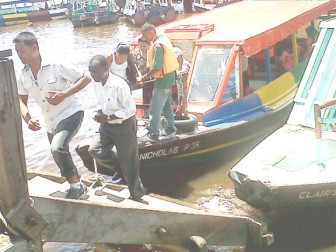
“When you come over all dem taxi man ah come right at the head of the step and bombard you and sometime them nah allow you to pass and that thing fatiguing,” the 60-year-old stressed.
He stated that he usually uses the speedboat because it is a faster way of getting across to his destination. The peanut vendor also stated that some minibuses refuse to transport elderly persons because of the time they take to board and disembark the vehicle.
However, not only the older folks are affected by the state of the stelling. Twenty-one-year-old Navita Deonarine told this newspaper that the steps at both ends of the stellings are a major concern for her. “When you wearing heels it affects us and also when the water rough stepping onto the boat is a major problem for me,” she said.
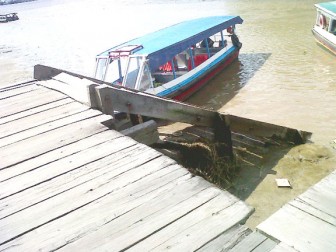
On visits to the stellings it was observed that the Vreed-en-Hoop end has been converted into a mini market and car park while the Georgetown end has become a mini vegetable market. Both ends are also a haven for vagrants while often rowdy taxi drivers flock commuters as they disembark the vessels, especially at the West Demerara end.
